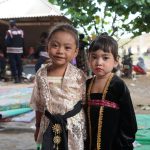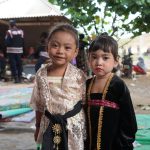Cultural diversity refers to the variety of cultural expressions and practices that exist within a society or between societies. It encompasses the differences in language, religion, traditions, values, and social norms that characterize various groups. In an increasingly globalized world, understanding cultural diversity has become essential for fostering mutual respect and cooperation among individuals from different backgrounds.
This understanding goes beyond mere acknowledgment; it requires a deep appreciation of the rich tapestry of human experience that cultural diversity represents. By recognizing the unique contributions of various cultures, we can cultivate a more inclusive environment that values the perspectives and experiences of all individuals. Moreover, cultural diversity is not static; it is dynamic and ever-evolving.
As societies interact and intermingle, they exchange ideas, beliefs, and practices, leading to the emergence of new cultural forms. This fluidity highlights the importance of adaptability and openness in our interactions with others. Understanding cultural diversity also involves recognizing the historical contexts that shape different cultures, including colonialism, migration, and globalization.
By examining these contexts, we can better appreciate the complexities of cultural identities and the ways in which they influence individual and collective behaviors. Ultimately, a nuanced understanding of cultural diversity enriches our lives and enhances our ability to engage meaningfully with others.
Key Takeaways
- Cultural diversity refers to the variety of different cultures and ethnicities within a society, and it is important to understand and respect these differences.
- Embracing cultural diversity can lead to a more innovative and creative work environment, as well as a broader range of perspectives and ideas.
- Challenges of embracing cultural diversity may include communication barriers, misunderstandings, and potential conflicts due to differing cultural norms and values.
- Promoting inclusivity and equality involves creating a welcoming and respectful environment for people of all cultural backgrounds, and ensuring equal opportunities for everyone.
- Celebrating differences means recognizing and appreciating the unique qualities and contributions of individuals from diverse cultural backgrounds.
Benefits of Embracing Cultural Diversity
Embracing cultural diversity offers a multitude of benefits that extend beyond individual experiences to impact entire communities and organizations. One of the most significant advantages is the enhancement of creativity and innovation. When people from diverse backgrounds come together, they bring unique perspectives and problem-solving approaches that can lead to groundbreaking ideas and solutions.
This is particularly evident in workplaces where diverse teams are more likely to generate innovative products and services, as they draw from a wider range of experiences and viewpoints. The fusion of different cultural insights can spark creativity in ways that homogenous groups may struggle to achieve, ultimately driving progress and success. In addition to fostering creativity, embracing cultural diversity promotes social cohesion and harmony within communities.
When individuals from various backgrounds feel valued and included, they are more likely to engage positively with one another, leading to stronger interpersonal relationships. This sense of belonging can reduce social tensions and foster a spirit of collaboration among community members. Furthermore, diverse communities are often more resilient in the face of challenges, as they can draw on a broader array of resources and strategies to navigate difficulties.
By celebrating cultural diversity, we not only enrich our own lives but also contribute to the creation of vibrant, thriving communities that are better equipped to face the complexities of modern life.
Challenges of Embracing Cultural Diversity

While the benefits of embracing cultural diversity are numerous, it is essential to acknowledge the challenges that can arise in this endeavor. One significant challenge is the potential for misunderstanding and miscommunication between individuals from different cultural backgrounds. Differences in language, non-verbal cues, and social norms can lead to confusion or conflict if not navigated carefully.
For instance, what may be considered polite or respectful behavior in one culture could be perceived as rude or inappropriate in another. This highlights the importance of cultural competence—the ability to understand and effectively interact with people from diverse cultures—as a crucial skill for fostering positive relationships in multicultural settings. Another challenge lies in addressing systemic inequalities that may exist within diverse societies.
While cultural diversity can enrich communities, it can also expose underlying power dynamics and social hierarchies that marginalize certain groups. Discrimination based on race, ethnicity, or cultural background can create barriers to full participation in society for some individuals. To truly embrace cultural diversity, it is necessary to confront these inequities head-on and work towards creating an environment where everyone has equal access to opportunities and resources.
This requires ongoing education, advocacy, and a commitment to dismantling oppressive structures that perpetuate inequality.
Promoting Inclusivity and Equality
| Metrics | 2019 | 2020 | 2021 |
|---|---|---|---|
| Gender Diversity | 45% | 50% | 55% |
| Employee Resource Groups | 5 | 7 | 10 |
| Training on Inclusivity | 80% | 85% | 90% |
Promoting inclusivity and equality is a vital aspect of embracing cultural diversity. It involves creating environments where all individuals feel valued and respected, regardless of their cultural background. One effective way to promote inclusivity is through education—both formal and informal.
Educational institutions play a crucial role in shaping attitudes towards diversity by incorporating multicultural curricula that reflect the histories and contributions of various cultures. By exposing students to diverse perspectives from an early age, we can cultivate empathy and understanding, equipping future generations with the tools they need to navigate a multicultural world. In addition to education, fostering inclusivity requires active engagement from individuals and organizations alike.
This can take many forms, such as implementing policies that promote diversity in hiring practices or creating spaces for open dialogue about cultural differences. Organizations can also benefit from training programs focused on cultural competence, which help employees develop the skills necessary to work effectively in diverse teams. By prioritizing inclusivity and equality, we not only enhance the well-being of individuals but also strengthen the fabric of our communities, ensuring that everyone has a voice and a stake in shaping our collective future.
Celebrating Differences
Celebrating differences is an essential component of embracing cultural diversity. Rather than viewing differences as obstacles or sources of division, we can choose to see them as opportunities for enrichment and growth. Festivals, cultural events, and community gatherings provide platforms for individuals to share their unique traditions, art forms, and culinary practices with others.
These celebrations not only foster appreciation for diverse cultures but also create spaces for dialogue and connection among community members. By engaging in these shared experiences, we can break down barriers and build relationships based on mutual respect and understanding. Moreover, celebrating differences encourages individuals to take pride in their cultural identities while also recognizing the value of others’ experiences.
This dual appreciation fosters a sense of belonging within diverse communities, where individuals feel empowered to express their unique identities without fear of judgment or exclusion. In this way, celebrating differences becomes a powerful tool for promoting social cohesion and harmony. By highlighting the beauty of our diverse backgrounds through art, music, food, and storytelling, we can create a vibrant tapestry that reflects the richness of human experience while reinforcing our shared humanity.
Building Bridges Across Cultures

Building bridges across cultures is crucial for fostering understanding and collaboration in an increasingly interconnected world. This process involves creating opportunities for dialogue and interaction between individuals from different backgrounds. One effective approach is through community initiatives that encourage cross-cultural exchanges—such as mentorship programs or collaborative projects—that allow participants to learn from one another’s experiences.
These initiatives not only facilitate personal connections but also help dismantle stereotypes and misconceptions that may exist between cultures. Additionally, technology plays a significant role in bridging cultural divides by enabling communication across geographical boundaries. Social media platforms and online forums provide spaces for individuals to share their stories, perspectives, and cultural practices with a global audience.
This virtual exchange fosters empathy and understanding by allowing people to engage with diverse viewpoints in real-time. However, it is essential to approach these interactions with sensitivity and respect for cultural nuances to ensure meaningful connections are established. By actively seeking opportunities to build bridges across cultures, we can cultivate a more interconnected world where collaboration thrives.
Creating a Unified Community
Creating a unified community amidst cultural diversity requires intentional efforts to foster inclusivity while respecting individual identities. A unified community does not mean erasing differences; rather, it involves recognizing and celebrating those differences as integral components of a shared identity. This can be achieved through community-building activities that encourage participation from all members—such as town hall meetings or collaborative art projects—that invite diverse voices into the conversation.
By creating spaces where everyone feels welcome to contribute their ideas and perspectives, we lay the groundwork for a more cohesive community. Furthermore, leadership plays a pivotal role in shaping a unified community by modeling inclusive behaviors and promoting policies that prioritize equity. Leaders must actively listen to the needs and concerns of all community members while advocating for initiatives that address systemic inequalities.
By fostering an environment where everyone feels heard and valued, leaders can inspire collective action towards common goals that benefit all members of the community. Ultimately, creating a unified community amidst cultural diversity requires ongoing commitment, collaboration, and a shared vision for a future where everyone thrives together—celebrating both our differences and our shared humanity along the way.
Exploring the concept of cultural diversity is essential in today’s globalized world. An insightful resource that delves into this topic can be found on the “About Us” page of a website dedicated to promoting awareness and understanding of various cultures. You can read more about their mission and how they approach cultural diversity by visiting this link. This page provides a comprehensive overview of the organization’s goals and methodologies in fostering a more inclusive and diverse global community.
FAQs
What is cultural diversity?
Cultural diversity refers to the existence of a variety of cultural groups within a society, including different ethnicities, languages, religions, traditions, and customs.
Why is cultural diversity important?
Cultural diversity is important because it promotes understanding, tolerance, and respect for different cultures. It also enriches societies by bringing different perspectives, ideas, and traditions.
How does cultural diversity impact society?
Cultural diversity can have a positive impact on society by fostering creativity, innovation, and economic growth. It also contributes to a more inclusive and harmonious community.
What are the challenges of cultural diversity?
Challenges of cultural diversity can include language barriers, discrimination, and misunderstandings. It can also lead to social tensions and conflicts if not managed effectively.
How can we promote cultural diversity?
Promoting cultural diversity can be achieved through education, awareness, and policies that support inclusivity and equality. Encouraging intercultural dialogue and celebrating different cultural events can also help promote diversity.









